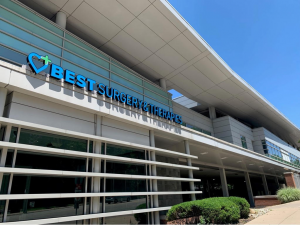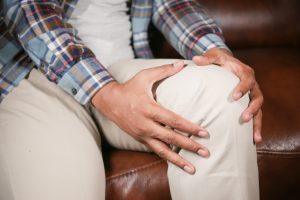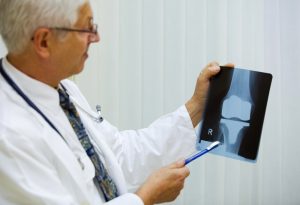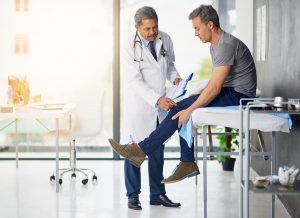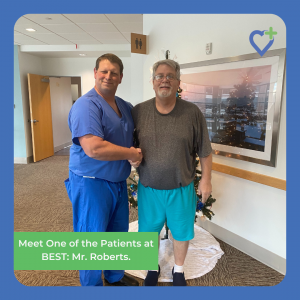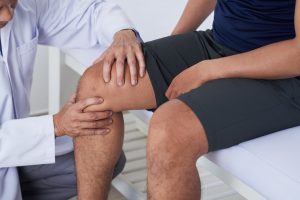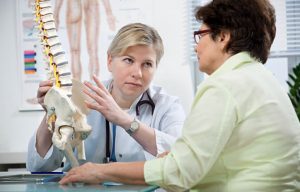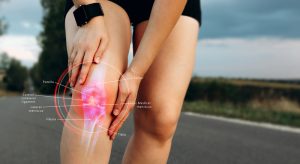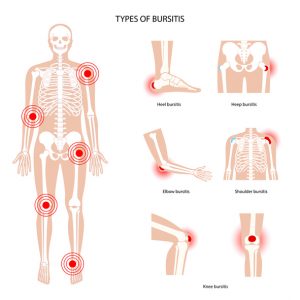Bone and Cartilage Fragments in the Knee
Bone and cartilage fragments in the knee, also known as loose bodies, are when very small particles of bone and cartilage break off from the knee joint. These fragments can float freely in the joint space and synovial fluid, but they can also become seriously debilitating, making it difficult to perform normal activities.
If your relationships, work, and leisurely activities are being affected by knee pain, or you’ve been diagnosed with bone and cartilage fragments in the knee, learning more about this condition can be beneficial. At BEST, we’re committed to patient education as a fundamental part of the treatment process.
Causes
Bone and cartilage can start to come loose and fragment in the knee for a number of reasons. One of the primary causes is age-related breakdown combined with everyday wear and tear. Our protective joint cartilage begins to dry out over time, making it more brittle and prone to thinning and degeneration. As this happens, it can subject the joints, such as the knee joints, to increased contact between the bone endings.
Conservative Treatment
Like other knee injuries, the goal of initial treatment is to determine whether symptoms can be successfully managed without the need for surgery. By taking active steps to reduce pain and inflammation, increase function, and promote overall health, patients can very often live with this condition and enjoy a good quality of life.
Common treatments include over-the-counter anti-inflammatories, hot/cold compression, rest, activity modification, regular exercise, posture improvement, and eating a nutrient-rich diet. Anti-inflammatory steroid injections and physical therapy can also be attempted if symptoms are more severe and don’t respond to less intensive treatments.
Symptoms
When small pieces of bone and cartilage break off of the knee joint, it may not be painful. It can also be difficult to distinguish the symptoms from another condition or injury that may be present in the knee, such as arthritis or a ligament or tendon sprain or tear. One of the most common telltale symptoms of bone and cartilage fragments in the joint is the locking of the knee, due to the way the fragments can inhibit motion.
Other possible symptoms of this condition include:
- Aches and pains in the knee
- Visible swelling and inflammation
- Crepitus, a term for grinding sensations in the joints
- Stiffness and limited range of motion
If you are experiencing any of these symptoms, or if they suddenly worsen in relation to another condition, it is highly recommended to see a qualified health care professional for diagnosis.
Diagnosis
A typical diagnostic examination for knee pain, knee locking, or any other symptoms should consist of the following steps:
- Discussion of specific symptoms and how they’re affecting daily activities
- Review of personal and family health history to determine if there is an elevated risk for certain conditions or illnesses
- A physical evaluation to test for a range of motion and identify painful/tender areas
- Diagnostic testing, such as MRI, CT scan, or an x-ray to visibly identify bone or cartilage fragments
If bone and cartilage fragments in the knee are determined to be the underlying cause of symptoms, the next step is to formulate a treatment plan, which usually begins with nonsurgical therapies.
Surgery
If symptoms become debilitating and don’t respond to weeks or months of conservative therapies, surgery can become an option. For bone and cartilage fragments in the knee, the most common surgical approach is knee arthroscopy. His involves a thin tube with a small camera at the end being inserted into the knee through a small incision. The surgeon can then clean the knee joint and remove the pieces of bone and cartilage that are causing pain and disrupting knee motion.
Upon recovery, patients will be given thorough instructions on caring for the incision and resuming activities. Physical therapy is also an essential part of recovery, helping patients relearn knee mechanics, strengthening the joint, and reducing the risk for reinjury.
BEST Health System Team is Here to Help
If you are dealing with chronic knee pain related to bone and cartilage fragments, our highly skilled team can help. We offer a wide range of conservative and surgical treatment options at our state-of-the-art facilities.
If you have experienced any of these symptoms or recieved a diagnosis and need treatment, BEST can help. Take the first step towards relief today.
Related Articles
A Map of BEST Health System's Ohio Locations
BEST – The Health System Redefining Care Throughout Ohio BEST Health System is a modern healthcare system with accessible locations throughout the state of Ohio. […]
Getting Rid of Knee Pain
Knee pain affects many people and there are several different causes and conditions that induce these symptoms. Living with knee pain can be debilitating and […]
What is Knee Replacement Surgery
The Causes of Knee Pain With age, knee pain becomes a common health condition that many adults suffer from. What begins as minimal, infrequent pain […]
5 Things You Didn't Know about Joint Care
Joint pain can be caused by a number of different conditions, the most prevalent being arthritis. If it is severe it can keep your day-to-day […]
Patient Testimonial - Mr. Roberts Total Knee Replacement
Living with Arthritis in the Knee What is it really like living with arthritis of the knee? As a patient, understanding what arthritis of the […]
Total Knee Arthroplasty with Dr. James Abbott
Living with Arthritis of the Knee What is it really like living with arthritis of the knee? To begin, it’s important to fully understand what […]
How Iovera Can Help Patients
What is Iovera Treatment? At BEST, our primary goal is to ensure our patients are at ease during each step of their treatment. Whether this […]
Why You Should Not Ignore Knee Pain
Are You Experiencing Persistent Knee Pain? If you have been dealing with chronic knee pain for a prolonged period, it is vital to take the […]
Osteoarthritis and Spinal Stenosis
What is Osteoarthritis Osteoarthritis is one of the most common causes of spinal stenosis, according to the American College of Rheumatology. Further research shows that […]
What Are the Most Common Causes of Meniscus Tears?
Meniscus tears are a common injury that results in pain and mobility problems for all kinds of people. Although it is often a sports injury, […]
Is it Time to Consider ACL Surgery? Watch Out for These Signs
movement changes or direct trauma to the knee through collision. This is why ACL tears are so common among football players, basketball players, and soccer players.
Five Major Types of Bursitis and How to Find Relief
Bursitis may not be as commonly known as arthritis, but it is just as difficult and debilitating to live with. This condition is similar to […]
